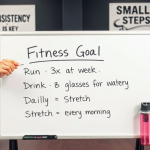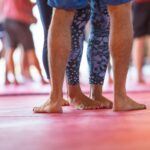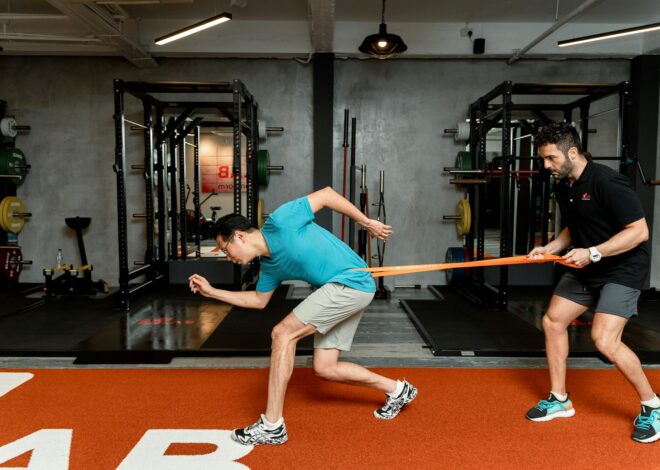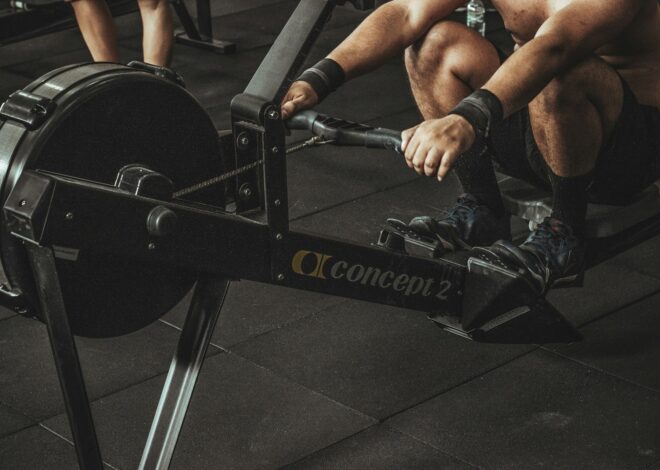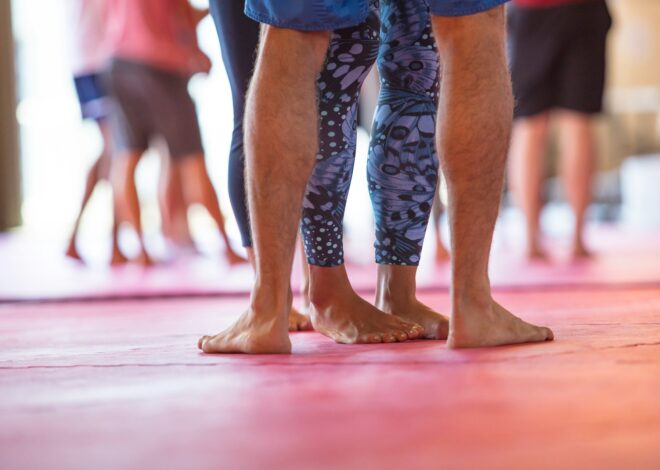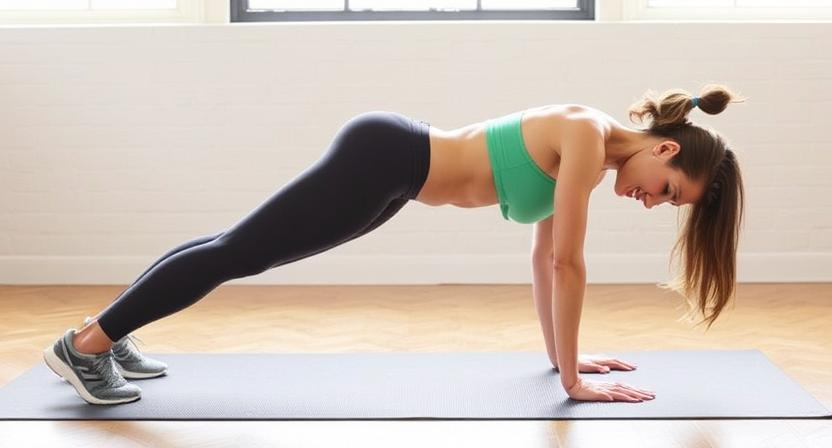
7 Core Exercises for a Stronger, Healthier Back
Benefits of Strengthening Your Core

Core strengthening is essential for overall body stability and functionality. By targeting the muscles in your abdomen, lower back, and pelvis, you can improve your posture, reduce the risk of injuries, and enhance your athletic performance. A strong core also aids in everyday movements such as bending, lifting, and twisting, making daily tasks easier to perform.
Additionally, a solid core can alleviate back pain by providing support to the spine and promoting proper alignment. Strengthening these muscles can help prevent chronic back issues and improve your overall quality of life. Moreover, a strong core contributes to better balance and coordination, which are crucial for activities that require agility and stability.
Understanding the Importance of a Strong Back
It is crucial to recognize the significance of having a strong back in maintaining overall health and well-being. A strong back plays a vital role in supporting the spine and proper posture, which are essential for preventing injuries and reducing the risk of back pain. Additionally, a strong back contributes to improved flexibility and mobility, allowing individuals to perform daily activities with ease and without discomfort.
Furthermore, a strong back enhances core stability, which is essential for optimal body mechanics and movement patterns. By strengthening the muscles in the back, individuals can better support their spine and improve their body alignment. This not only helps in preventing back issues but also leads to better overall physical performance in various activities and sports.
Plank Variations for Core Strength
Plank variations are an excellent way to enhance core strength and stability. One popular variation is the side plank, which targets the obliques and helps improve overall balance. To modify, try raising the top leg or incorporating a hip dip for an added challenge. Another effective variation is the forearm plank with leg lifts, engaging the lower abdominals and hip flexors. Lift one leg at a time while maintaining a strong plank position to intensify the exercise.
For a dynamic twist, consider adding plank jacks to your routine. This exercise elevates the heart rate and works the entire core. Begin in a traditional plank position and jump the feet wide, then back together. To advance, try alternating shoulder taps while in plank position. This variation not only strengthens the core but also improves shoulder stability and coordination. Experiment with these plank variations to spice up your core workouts and achieve optimal results.
Exercises to Improve Posture and Reduce Back Pain
Slouching can wreak havoc on your posture and lead to back pain over time. By incorporating exercises that target the muscles responsible for maintaining proper posture, you can strengthen your back and reduce discomfort. One key exercise to try is the Superman pose, where you lie face down and lift your arms and legs off the ground simultaneously to engage your back muscles.
Another effective exercise for improving posture and reducing back pain is the Cat-Cow stretch. This simple yoga pose involves alternating between arching your back up towards the ceiling (Cat pose) and dropping your belly towards the floor while lifting your head and tailbone (Cow pose). This movement helps to mobilize and strengthen the muscles along your spine, promoting better alignment and relieving tension.
Tips for Proper Form During Core Workouts
When performing core workouts, maintaining proper form is essential to prevent injury and maximize the effectiveness of the exercises. One key tip is to engage your core muscles throughout the entire movement, avoiding any arching or overarching of the back. Keeping your spine in a neutral position will help target the correct muscles and prevent straining your lower back. Additionally, be mindful of your breathing – exhale during the exertion phase of the exercise and inhale during the relaxation phase to support your core engagement.
Another crucial aspect of proper form during core workouts is to avoid relying on momentum or swinging movements. Focus on controlled and deliberate movements, emphasizing the contraction of your core muscles with each repetition. It’s important to maintain stability and control throughout the exercise to fully engage the targeted muscles. Remember to listen to your body and start with exercises that match your current fitness level, gradually progressing as you build strength and endurance in your core muscles.
How to Incorporate Core Exercises into Your Routine

Incorporating core exercises into your routine can be a beneficial addition to your overall fitness regimen. Start by setting aside a specific time during your workout to focus on strengthening your core muscles. You can either incorporate core exercises at the beginning of your session to activate these muscles or at the end to finish off your workout with a core burn.
Another way to include core exercises is to choose a variety of workouts that target different areas of your core, such as the rectus abdominis, obliques, and transverse abdominis. Mixing up exercises like planks, mountain climbers, and Russian twists can help engage all these muscle groups and prevent boredom in your routine. Remember to gradually increase the intensity of your core workouts as you progress to continue challenging your muscles and seeing improvements in strength and stability.
Equipment-Free Core Exercises for Beginners
For beginners looking to strengthen their core without the need for equipment, there are several effective exercises that can be done at home or in a gym setting. One simple yet beneficial exercise is the bicycle crunch, which targets the abdominal muscles and helps improve overall core strength. To perform this exercise, lie on your back with your hands behind your head, lift your legs off the ground, and bring your right elbow toward your left knee while extending your right leg. Alternate sides in a pedaling motion, focusing on engaging your core throughout the movement.
Another equipment-free core exercise that is ideal for beginners is the plank. Planks are excellent for building core stability and strength without putting too much strain on the back. To do a plank, start in a push-up position with your hands directly under your shoulders and feet hip-width apart. Maintain a straight line from your head to your heels, engaging your core muscles to hold the position for as long as you can. Gradually increase the duration of your planks as your core strength improves.
Advanced Core Exercises for a Greater Challenge
To take your core workout to the next level and challenge your abdominal muscles further, incorporating advanced exercises can provide a greater challenge and help build strength and endurance. One advanced exercise to consider is the hanging leg raise, where you hang from a pull-up bar and lift your legs up towards your chest, engaging your lower abdominals. This exercise not only targets the core but also works on grip strength and overall stability.
Another effective advanced core exercise is the dragon flag, made famous by martial artist Bruce Lee. This exercise involves lying on a bench or flat surface, holding onto the edge with your hands, and lifting your entire body into a straight position, using your core muscles to control the movement. The dragon flag is an intense exercise that requires a strong core to maintain proper form and stability throughout the movement, making it a challenging yet rewarding addition to your workout routine.
The Role of Core Stability in Back Health
Core stability plays a crucial role in maintaining a healthy back. When the core muscles are strong and engaged, they provide support to the spine and surrounding structures, helping to prevent injuries and reduce the risk of back pain. By strengthening the core, you can improve your posture, alleviate strain on the back, and enhance overall stability and balance.
Moreover, a stable core can assist in transferring forces effectively throughout the body during movement, thus reducing the pressure on the back muscles. This is particularly beneficial during activities that involve bending, lifting, or twisting. By incorporating core stability exercises into your routine, you can not only protect your back from injuries but also improve your overall functional movement and physical performance.
Key Muscles Involved in Core Workouts
Engaging in core workouts is essential for building a strong and stable midsection, crucial for overall strength and posture. Understanding the key muscles involved in these workouts can help you target them effectively and maximize your efforts. The core muscles consist of not only the well-known rectus abdominis and obliques but also the deeper muscles such as the transverse abdominis, multifidus, and pelvic floor muscles.
These deeper core muscles play a vital role in providing stability and support to the spine, pelvis, and hips. Strengthening these muscles can improve your balance, coordination, and overall athletic performance. By incorporating exercises that target these key muscles, you can enhance your core strength, reduce the risk of injuries, and support better posture alignment.
Common Mistakes to Avoid During Core Exercises

When performing core exercises, it is important to avoid overarching your lower back or allowing it to sag excessively. Engaging the core muscles correctly is key to maintaining proper alignment and preventing strain on the back. Another common mistake to avoid is relying too heavily on momentum to perform the exercises. It is essential to focus on controlled movements and engage the core muscles throughout the entire range of motion.
Additionally, be cautious not to hold your breath while performing core exercises. Holding your breath can increase intra-abdominal pressure and lead to unnecessary strain on the pelvic floor muscles. Remember to breathe steadily and rhythmically to support your core engagement and overall performance during the exercises.
Variations of Russian Twists for a Stronger Core
Russian twists are an effective exercise for targeting the obliques and enhancing core strength. To add variety and intensity to your workout routine, consider incorporating different variations of Russian twists. One popular variation is the weighted Russian twist, where you hold a weight or medicine ball as you twist from side to side. This adds resistance and challenges your core muscles even further. Another variation is the leg lift Russian twist, where you lift your legs off the ground while performing the twisting motion. This engages not only your core but also your lower abdominal muscles, providing a comprehensive core workout.
Incorporating Yoga Poses for Core Strength
Yoga poses offer a holistic approach to strengthening the core muscles, providing a balance of strength, flexibility, and mindfulness. Poses such as Boat Pose (Navasana), Plank Pose (Phalakasana), and Side Plank Pose (Vasisthasana) engage the deep muscles of the abdomen and back, promoting stability and endurance. These poses not only target the core but also help improve overall body awareness and alignment.
Incorporating yoga into your fitness routine can help enhance core strength by challenging the muscles in a different way than traditional exercises. The practice of yoga emphasizes breath control and mind-body connection, which can lead to better engagement of the core muscles during various movements. By including yoga poses for core strength, individuals can experience improved posture, reduced back pain, and increased stability in daily activities.
Pilates Moves for a Healthier Back
Pilates is renowned for its focus on core strength, but its benefits extend beyond just the midsection. When it comes to achieving a healthier back, Pilates moves can play a vital role in strengthening the supporting muscles that help maintain proper posture and spinal alignment. Exercises like the Pilates Swimming, where you lift opposing arm and leg off the mat while engaging your core, can help build a strong back while improving overall stability.
Another effective Pilates move for a healthier back is the Saw exercise. This movement involves twisting the torso while seated, engaging the obliques and stretching the spine, promoting flexibility and strength in the back muscles. Pilates not only targets the superficial muscles but also the deeper stabilizing muscles, which are crucial for maintaining a healthy back and preventing injuries. By incorporating Pilates moves into your routine, you can enhance your back health while enjoying the myriad benefits of this form of exercise.
The Link Between Core Strength and Athletic Performance
Having a strong core is essential for athletes across all sports. A solid core provides a stable base for movement and helps generate power and speed. Improved core strength can enhance performance in activities such as running, jumping, throwing, and more. Athletes with a well-developed core are better equipped to transfer force efficiently throughout their body, leading to enhanced agility and overall athleticism.
In addition to boosting physical performance, core strength plays a crucial role in injury prevention for athletes. A stable core helps maintain proper posture and alignment, reducing the risk of injuries such as muscle strains, back pain, and joint issues. By strengthening the muscles in the abdomen, lower back, and pelvis, athletes can better support their body during high-intensity training sessions and competitive events, leading to improved durability and resilience on the field, court, or track.
Benefits of Including Core Workouts in Your Fitness Routine

Core workouts play a crucial role in enhancing overall fitness levels and promoting a strong, stable core. Including these exercises in your fitness routine can lead to improved posture, reduced risk of back pain, and increased functional strength for daily activities. Engaging the core muscles through various movements not only helps in toning the abdominal muscles but also strengthens the back and pelvis for better support and stability.
Moreover, incorporating core workouts in your fitness regimen can enhance athletic performance and reduce the risk of injuries during physical activities. A strong core provides a solid foundation for movement, allowing for better balance, coordination, and power transfer between the upper and lower body. By targeting the deep muscles of the core, such as the transverse abdominis and multifidus, you can improve overall body strength and endurance, leading to a more efficient and effective workout routine.
How Core Strength Can Improve Balance and Coordination
Core strength plays a vital role in improving balance and coordination. The core muscles, including the abdominals, obliques, and lower back muscles, provide stability and support for the spine, pelvis, and surrounding joints. By strengthening these muscles through targeted exercises, individuals can enhance their ability to maintain proper posture and control movements during various activities. This can lead to better balance and coordination in everyday tasks and physical exercises.
Furthermore, a strong core can help prevent falls and injuries by improving body awareness and control. When the core muscles are engaged and functioning efficiently, they can effectively distribute the body’s weight and stabilize the trunk, allowing for more controlled movements and quicker reflex actions. This enhanced stability can be particularly beneficial for athletes, older adults, and individuals recovering from injury, as it can help reduce the risk of trips, stumbles, and other balance-related mishaps.
Exercises to Target Lower Back Muscles
The lower back muscles play a crucial role in stabilizing the spine and supporting the entire body during various movements. Strengthening these muscles not only helps in reducing the risk of injury but also improves overall posture and alleviates back pain. One effective exercise to target the lower back muscles is the Superman exercise. To perform this exercise, lie face down on a mat with your arms extended overhead and legs straight. Lift your arms and legs off the ground simultaneously, engaging your lower back muscles to hold the position for a few seconds before lowering back down.
Another beneficial exercise for targeting the lower back muscles is the Bird-Dog exercise. Start on your hands and knees with your wrists aligned under your shoulders and knees under your hips. Extend your right arm forward and left leg back while keeping your core engaged and back flat. Hold this position for a few seconds before bringing your elbow and knee back to the starting position. Repeat on the opposite side to effectively engage and strengthen your lower back muscles.
The Connection Between Core Strength and Spinal Health
A strong core plays a pivotal role in maintaining spinal health and stability. The muscles in the core, including the deep stabilizing muscles, provide support to the spine and help prevent injuries. When the core is weak, the spine is more prone to misalignment and added stress, which can lead to discomfort and pain. By incorporating core-strengthening exercises into your routine, you can help improve your spinal alignment and reduce the risk of back issues in the future.
Furthermore, a strong core can aid in improving posture, which also benefits spinal health. Good posture helps distribute weight evenly throughout the body, reducing strain on the spine and surrounding structures. By developing a stronger core, you can support your spine in maintaining proper alignment and alleviate pressure on the vertebrae. Improving core strength not only enhances spinal health but also contributes to overall well-being and functionality in daily activities.
• A strong core provides support to the spine and helps prevent injuries
• Weak core muscles can lead to spinal misalignment and added stress
• Core-strengthening exercises can improve spinal alignment and reduce the risk of back issues
• Good posture, aided by a strong core, distributes weight evenly throughout the body
• Developing a stronger core alleviates pressure on the vertebrae and supports proper spinal alignment
Incorporating core-strengthening exercises into your fitness routine is essential for maintaining spinal health. By focusing on strengthening your core muscles, you not only reduce the risk of back injuries but also improve your overall posture. With a strong core supporting your spine, you can alleviate pressure on the vertebrae and enhance your daily functionality. Prioritizing core strength in your workouts will benefit both your physical well-being and long-term spinal health.
Developing a Stronger Core for Overall Wellness
Core strength plays a pivotal role in promoting overall wellness. Not only does a strong core help improve posture and reduce the risk of back pain, but it also enhances balance, stability, and athletic performance. By engaging in regular core workouts, individuals can develop a solid foundation that supports their daily activities and fitness goals.
Incorporating a variety of core exercises into your routine is key to achieving a well-rounded core workout. From planks and Russian twists to Pilates moves and yoga poses, there are numerous options to target different muscle groups within the core. By gradually progressing from beginner to advanced exercises, individuals can challenge themselves and continue building strength in their core for enhanced wellness benefits.




